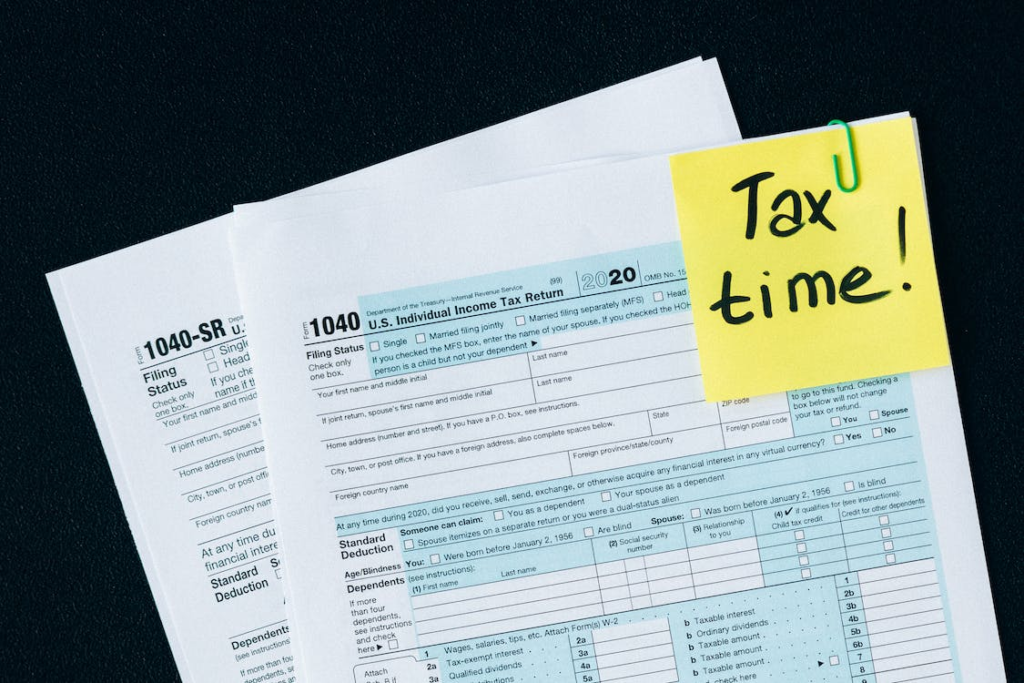Should you be paying quarterly taxes? If you have a business, whether you do freelance work, are a sole proprietor, or own a corporation, the answer is likely yes.
When you run a business, taxes can get tricky quickly — there’s no one paying taxes for you per a W4 form. It’s up to you to manage your finances and determine how much (and when) you need to pay the government.
If you think you should be paying estimated quarterly taxes to the IRS, keep reading to learn how to file.
Related: What Is Tax Basis?
Table of Contents
Who Should File Their Taxes Quarterly?
If you own a business or are self-employed, you’ll most likely have to pay estimated taxes every three months. Individuals who are required to file quarterly include:
- Independent contractors
- Sole proprietors
- Partners of businesses
- Business owners
Estimated quarterly taxes work like a pay-as-you-go system for income tax — you pay as you earn. No one wants to pay estimated taxes, so why should you?
Unfortunately, if you don’t pay enough income tax throughout the year, you’ll be liable to pay penalties charged by the IRS; they’ll even charge you for late quarterly payments.
There are a few guidelines the IRS uses to help determine if you must make these quarterly payments:
- Do you expect to owe over $1,000 (less tax credits and withholding) at the end of the tax year?
- Will your tax credits and withholding be less than your tax liability of the previous year?
- Or do you expect them to be less than 90% of this year’s estimated tax liability?
If so, you must file your taxes quarterly.
Is your business eligible to receive the R&D tax credit? Find out here — You could be missing out on thousands in tax incentives!
How Do You Know How Much To Pay Each Quarter?
There are two ways to calculate your quarterly estimated taxes:
- If you have a steady income throughout the year or you already have a pretty good idea of how much you’ll make, you can estimate how much you think you’ll owe for the entire year. Then, it’s as simple as sending ¼ of that amount to the IRS each quarter.
- However, if your income fluctuates often, you’ll want to estimate what you owe as you earn. This method involves annualizing your taxes each quarter based on how much you made and any deductions you have so far. This IRS publication is an excellent resource to help you determine how much to pay.
Calculate How Much You Owe
Once you have an idea of what your income will be for the year, you’ll have to account for income tax and the self-employment tax, which is approximately 15.3% of your income.
For example, if you estimate making $50,000 this year with business expenses and deductions totaling $15,000, your taxable income would be $35,000.
You would then owe approximately $4,000 in income tax and almost $5,000 in self-employment tax, meaning you’ll owe the IRS around $9,000 for the year — that’s well over the $1,000 minimum; you must pay estimated taxes.
Related: How To Grow Your Accounting Business With Automation
When Do You Have To Pay Estimated Taxes?

The IRS has deadlines for collecting your income as you earn it on a quarterly basis — these deadlines do not match normal calendar quarters.
- April 15th
- June 15th
- September 15th
- January 15th
You must pay taxes based on your income earned from the months prior to the deadline.
However, while you can’t make fewer payments, you can make more. For example, if you think you’ll owe $5,000 by the end of the year, you could break it up and send the IRS payments each month instead of paying larger amounts four times per year.
What If You Don’t Pay Quarterly Taxes?
If you don’t pay your estimated taxes (or you pay them late) and end up owing over $1,000 throughout the year, you’ll have to pay penalties.
The IRS bases your penalty on how much you underpaid, the period of your underpayment, and the quarterly underpayment interest rate. And to top it all off, the IRS also charges interest on your penalties until you pay the balance in full.
Those interest rates change each quarter — you can view the current and past interest rates for underpaying quarterly taxes here.
What Taxes Do You Have To Pay?
Business owners and self-employed individuals generally pay for two tax categories when they make estimated payments:
- The self-employment tax, which covers Medicare and Social Security costs
- Income tax on your business earnings
When it comes to the self-employment tax, 12.4% of your earnings go toward Social Security for the first $147,000 your business makes. In addition, 2.9% of all earnings go toward Medicare costs.
You can use IRS Form 1040-ES to help calculate your taxable income and estimated payments. Then, you simply divide that amount by four (or more, if you want to make smaller, more frequent tax payments) and ensure you send that amount to the IRS before each quarterly deadline.
Can You Reduce Your Quarterly Tax Burden?
If your business earns under a certain amount in taxable income, you can claim the qualified business income deduction. This deduction allows business owners and self-employed individuals to reduce their pass-through income by up to 20%!
However, not all income qualifies for this deduction — you can follow the link above to view the excluded items, per the IRS.
Don’t miss out on IRS tax incentives like the R&D tax credit — See if your business qualifies!
Where Do You Go To Pay Your Estimated Quarterly Taxes?

Luckily, the IRS makes it easy for you to pay your estimated taxes. You can pay by:
- Mailing a check with IRS Form 1040-ES
- Filing online using the EFTPS system
- Using IRS Direct Pay or the IRS2G0 app
- Visiting an IRS retail partner
In addition, if your Form 1040 shows an overpayment, you can apply it to your estimated taxes instead of taking it as a refund.
If you have a business, don’t forget to file and pay your estimated quarterly taxes on time to avoid paying penalties and interest to the IRS!
Related: How to Respond To IRS Notice
